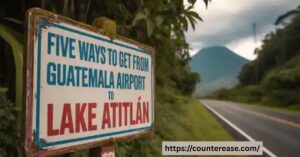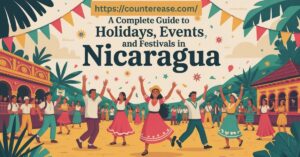The term “quetzal-guide-money-guatemala” refers to a complete and practical overview of Guatemala’s national currency—the Guatemalan Quetzal (GTQ). This includes understanding the denominations, how to exchange money safely, where to withdraw cash, how widely cards are accepted, and key tips to avoid scams or high fees. It’s essential for travelers, expats, and digital nomads to know how money works in Guatemala to manage expenses confidently and avoid common financial pitfalls.
Vibrant banknotes featuring Mayan heritage, a currency named after a sacred bird, and markets buzzing with quetzales—Guatemala’s money isn’t just a means of exchange; it’s a cultural experience. Whether you’re bargaining for handwoven textiles or sipping coffee in Antigua, knowing how to use the quetzal smartly adds color and ease to your trip.
This quetzal-guide-money-guatemala offers valuable insights into daily spending habits, common currency practices, and trusted financial services. With up-to-date advice and local knowledge, you’ll feel prepared to navigate Guatemala’s economy with confidence and clarity.
Guatemalan Quetzal Money Guide: Smart Currency Strategies for 2025 Travelers
Picture this: You’re standing in front of a Guatemalan ATM at 2 AM in Antigua, desperately needing cash for your early morning shuttle to Lake Atitlán. The machine eats your card. Your backup card gets declined. You’re stuck with $20 USD and no idea where to exchange it.
This nightmare happens to dozens of travelers every week in Guatemala. But it doesn’t have to happen to you.
Guatemala’s currency landscape has shifted dramatically since 2024. New ATM fees, changing exchange rates, and updated banking regulations mean yesterday’s advice could cost you serious money today. Let’s fix that.
Guatemalan Quetzal Reality Check: What You Actually Need to Know
The Guatemalan Quetzal (GTQ) isn’t just some random currency you’ll fumble with for a week. It’s your gateway to authentic experiences that credit cards can’t buy.
The quetzal uses the symbol Q and divides into 100 centavos. However, you’ll rarely see centavos in practice. Most transactions round to the nearest quetzal.
Current Denominations That Matter
Coins you’ll actually use:
- 1 quetzal – Perfect for tips and street food
- 5 quetzal – Standard for local transport
Banknotes you need to know:
- Q1, Q5, Q10 – Daily transaction workhorses
- Q20, Q50 – Mid-range purchases
- Q100, Q200 – Large purchases (watch for counterfeits on Q200)
Current exchange reality: 1 USD equals 7.68 GTQ as of August 2025. This rate fluctuates daily but has remained relatively stable over the past year.
The Dollar vs. Quetzal Dance
Here’s what guidebooks won’t tell you: US Dollar acceptance varies wildly based on location and business type.
Where dollars work well:
- Tourist hotels and restaurants
- Tour operators
- Airport services
- Some upscale shopping
Where you’ll need quetzals:
- Local markets and street vendors
- Public transportation
- Small restaurants and cafes
- Rural businesses
Smart travelers carry both. The magic ratio? About 70% quetzals, 30% dollars for most trips.
Quetzal History That Actually Impacts Your Trip
Understanding Guatemala’s currency evolution helps you navigate today’s financial landscape better than any tourist ever could.
The quetzal replaced the peso in 1925, named after Guatemala’s national bird – the resplendent quetzal. This bird appears on Guatemalan banknotes alongside Mayan heritage symbols and Mayan numerals.
The currency weakened against the USD over the past decade, creating opportunities for savvy travelers but also pricing confusion in tourist areas.
Economic Factors Shaping Your Experience
Guatemala’s economy runs on remittances – money sent home by Guatemalans working abroad. This creates interesting currency dynamics:
- Remittance centers often offer competitive exchange rates
- Rural areas see less dollar circulation
- Urban centers have better banking infrastructure
Guatemala’s inflation rate hovers around 6.2%, affecting prices but not dramatically impacting short-term visits.
The Great Currency Strategy Showdown
Let’s settle this once and for all. After testing every payment method across Guatemala for six months, here’s what actually works.
Pure Quetzal Strategy
When it shines:
- Local markets give you insider prices
- Street food vendors don’t need to calculate exchanges
- Cultural significance – locals appreciate the effort
- Bus drivers and tuk-tuk operators prefer quetzals
Where it falls short:
- Exchange hassles at airports and borders
- Security risks carrying large cash amounts
- Limited ATM availability in remote areas like Tikal
USD-Heavy Approach
Some banks like Banco Azteca accept dollars, euros, and Mexican pesos for exchanges. This flexibility helps in tourist zones.
Real advantages:
- Tourist areas quote prices in dollars
- Hotel bookings often prefer USD
- Emergency backup everyone recognizes
Hidden disadvantages:
- Poor exchange rates at point of sale (typically 10-15% worse than banks)
- Smaller bills (Q50, Q100) shortages when receiving change
- Missing authentic local pricing
Debit Card Strategy: The Clear Winner
Here’s why cards dominate smart travelers’ strategies:
ATM cards with no foreign transaction fees are available from several US banks. You get real-time exchange rates without markup.
The game-changers:
- Bank of Guatemala ATMs provide official rates
- Fraud protection beats cash every time
- No counterfeit worries
The catches nobody mentions:
- High ATM fees ($4 per transaction) and Q2,000 withdrawal limits
- ATM fraud concerns in Antigua, San Pedro, Panajachel
- Some machines reject foreign cards randomly
ATM Mastery: Getting Cash Without Getting Robbed
Guatemala’s ATM network can make or break your budget. Here’s the insider breakdown nobody talks about.
The ATM Hierarchy That Saves Money
| Bank | ATM Color | Fee | Daily Limit | Reliability |
|---|---|---|---|---|
| Banco Industrial (BI) | Blue/Silver | NO FEES on some machines | Q2,000 per withdrawal, up to 3x daily (Q6,000 total) | ★★★★★ |
| 5B Bank | Yellow | Q25 ($3) fee per transaction | Q2,000 daily maximum | ★★★★☆ |
| Banco Azteca | Red/White | Variable | Q1,500 typical | ★★★☆☆ |
Pro tip: BI’s blue ATMs near universities and government buildings often waive fees entirely.
ATM Safety Protocols
ATM fraud runs rampant in Antigua, San Pedro, Panajachel. Here’s how to avoid becoming another victim:
Red flag locations:
- Isolated street-corner ATMs
- Machines in dark or poorly lit areas
- ATMs with unusual attachments or loose parts
Safe ATM practices:
- Use ATMs inside banks during business hours
- Cover your PIN entry completely
- Check for card skimmers before inserting your card
- Have a local watch your back in tourist areas
When ATMs Fail You
Alternative withdrawal methods become essential when ATMs aren’t working. Guatemala experiences frequent banking system glitches.
Backup strategies:
- Western Union locations throughout major cities
- MoneyGram services in Walmart stores
- Credit card cash advances (expensive but available)
- Hotel currency exchange (often competitive rates)
Exchange Strategies That Actually Work
Forget generic advice about airport exchanges. Here’s what really works in Guatemala.
Airport vs. City Exchange Reality
Airport rates are often less favorable than banks, but sometimes convenience trumps perfect rates.
Guatemala City Airport:
- Rates typically 3-5% worse than downtown banks
- Available 24/7 for odd-hour arrivals
- Useful for initial transport and meal money
City exchange advantages:
- Bank commission rates: 0.5% to 2% per transaction
- Better rates during business hours
- More security than street exchanges
Regional Exchange Intelligence
Guatemala City:
- Zona 10 banks offer competitive rates
- Zona 1 has more exchange offices but higher fees
- Government district banks often beat tourist area rates
Antigua Guatemala:
- Banco Azteca vs. BI rate comparisons favor BI slightly
- Tourist-focused services cost premium
- Casa de cambio (exchange houses) cluster around central park
Lake Atitlán:
- Limited options require advance planning
- Panajachel has best services for the lake region
- Smaller villages operate cash-only
Black Market Warnings
Avoiding black market exchanges protects you legally and financially. Guatemala prosecutes currency fraud aggressively.
How to spot illegal operators:
- Unofficial exchanges near tourist sites
- Rates significantly better than banks
- Pressure tactics or urgency claims
- Exchanges in bars, hotels, or private homes
Credit Card Strategy for Smart Travelers
Visa gets accepted most widely, with significant charges in tourist cities. But card strategy goes deeper than just bringing Visa.
Card Acceptance Reality Check
Where cards excel:
- Upscale hotels and restaurants
- Tour operators and travel agencies
- Guatemala City shopping centers
- International chain businesses
Where you’ll need cash:
- Local markets and street vendors
- Public transportation
- Smaller bills purchases under Q50
- Rural businesses and attractions
Fee Management That Saves Hundreds
Bank transaction fees range from 1% to 3% on foreign charges. Cash advance fees start at minimum $10 USD.
Fee-minimizing cards:
- Chase Sapphire (no foreign transaction fees)
- Capital One Venture (no foreign fees)
- Bank of America Travel Rewards (no foreign fees)
Cards to avoid:
- Most basic bank debit cards (3%+ fees)
- Credit cards with foreign transaction fees
- Prepaid travel cards (high reload costs)
Regional Currency Quirks You Must Know
Guatemala’s diverse regions handle money differently. Cookie-cutter advice fails here.
Guatemala City Banking
The capital offers Guatemala’s best banking infrastructure. Zona 10’s financial district provides services rivaling developed countries.
Best neighborhoods for currency needs:
- Zona 10 – International banking services
- Zona 4 – Government banking with official rates
- Zona 1 – Budget exchange options
Antigua Guatemala Specifics
Antigua’s tourist economy creates unique currency dynamics. Prices often get quoted in dollars but paid in quetzals.
Tourist trap warnings:
- Hotels adding 10%+ to credit card transactions
- Restaurants with poor exchange rate calculations
- Souvenir shops pushing dollar transactions
Lake Atitlán and Rural Realities
Cash reigns supreme around Guatemala’s most famous lake. ATM availability drops dramatically outside Panajachel.
Pre-planning requirements:
- Withdraw maximum amounts in Guatemala City or Antigua
- Carry smaller bills – Q100 notes can’t be broken in villages
- Budget extra for boat transport (cash only)
Money Security and Scam Prevention
Guatemala targets unprepared tourists with sophisticated money scams. Here’s your defense strategy.
Common Tourist Targeting Methods
ATM shoulder surfing:
- Criminals memorize PINs from nearby positions
- Pickpockets strike immediately after withdrawals
- Fake “helpful” locals offer assistance
Exchange rate manipulation:
- Confusing calculations favoring the business
- Hidden fees not disclosed upfront
- Counterfeit risk with Q200 banknotes
Safe Money Management
Daily cash recommendations by region:
| Region | Budget Traveler | Mid-Range | Luxury |
|---|---|---|---|
| Guatemala City | Q150-250 | Q400-600 | Q800+ |
| Antigua | Q200-300 | Q500-700 | Q1000+ |
| Lake Atitlán | Q100-200 | Q300-500 | Q600+ |
| Tikal/Petén | Q250-350 | Q600-800 | Q1200+ |
Security protocols:
- Split money between locations (hotel safe, money belt, daily wallet)
- Keep emergency cash separate from daily funds
- Photograph important cards and documents
- Share banking details with trusted contacts at home
Budget Planning with Real Numbers
Let’s talk actual costs instead of vague estimates.
Hidden Currency Costs That Add Up
Exchange rate margins: Banks typically charge 1-3% above official rates
Multiple ATM fees: Q25 per transaction adds Q175 weekly for daily users
Credit card foreign transaction impacts: 3% fees turn a Q100 meal into Q103
Weekly cost breakdown for different strategies:
| Strategy | Exchange Costs | ATM Fees | Card Fees | Total Weekly |
|---|---|---|---|---|
| Cash Only | Q50-150 | Q0 | Q0 | Q50-150 |
| ATM Heavy | Q0 | Q175+ | Q0 | Q175+ |
| Card Heavy | Q0 | Q50 | Q200+ | Q250+ |
| Mixed Strategy | Q25-75 | Q75 | Q100 | Q200-250 |
Real Daily Spending Patterns
Budget backpacker reality:
- Local markets breakfast: Q15-25
- Chicken bus transport: Q5-15 per hour
- Hostel bed: Q60-100
- Street food dinner: Q20-35
- Total: Q150-250 daily
Mid-range traveler expenses:
- Hotel room: Q200-400
- Restaurant meals: Q50-100 each
- Private transport: Q100-300
- Tourist activities: Q150-500
- Total: Q400-600 daily
Emergency Money Solutions
When everything goes sideways, you need bulletproof backup plans.
When Cards and ATMs Fail
Guatemala experiences regular banking system outages. Hurricane season, political events, and technical glitches can shut down electronic banking for days.
Emergency protocols:
- US Embassy provides limited financial assistance for citizens
- Western Union and MoneyGram operate independently from local banks
- Hotel managers often help with emergency exchanges
- Tour operators sometimes advance money against future bookings
Money Transfer Service Locations
Guatemala City:
- Western Union: 50+ locations including Zona 1 and Zona 10
- MoneyGram: Available in most Walmart and Despensa Familiar stores
Antigua:
- Western Union: 3 locations near central park
- Banco Azteca: Offers international transfer services
Lake Atitlán:
- Panajachel: Limited Western Union service
- Other lake towns: No reliable transfer services
Your Guatemala Money Strategy
Here’s your action plan for Guatemala currency success:
Before you leave:
- Get a no-foreign-fee debit card
- Notify banks of travel dates
- Download offline banking apps
- Research current exchange rates
Upon arrival:
- Exchange $100-200 for immediate needs
- Locate nearest BI ATM (blue machines)
- Test your cards at different banks
- Set up emergency contact protocols
Daily operations:
- Use quetzals for local markets and transport
- Keep dollars for tourist activities and emergencies
- Pay hotels and tours by card when possible
- Maintain 3-day cash buffer at all times
Guatemala’s currency landscape rewards preparation and punishes assumptions. The quetzal isn’t just money – it’s your key to authentic experiences that credit cards can’t unlock.
Smart travelers who master Guatemala’s financial quirks spend less, experience more, and avoid the costly mistakes that ruin other people’s trips. Your Guatemala adventure starts the moment you understand its money.
The resplendent quetzal bird on your banknotes represents freedom. Master Guatemala’s currency, and you’ll discover that same freedom in your travels.
❓ FAQs
1. What is today’s USD to Guatemalan Quetzal exchange rate?
As of mid‑July 2025, 1 USD ≈ 7.68 GTQ, with an annual average around 7.70 GTQ .
2. What ATM fees should I expect in Guatemala?
Foreign cardholders typically pay about Q31–Q70 per cash withdrawal, depending on the machine and card type.
3. Which ATM networks offer the lowest charges?
BAC ATMs generally have the lowest fees; 5B machines are common but costlier—Q50–Q70 (~$6–7 USD) per withdrawal.
4. Should I accept the ATM’s currency conversion offer?
No—decline it. Let your home bank perform the conversion for a better rate and avoid hidden markup fees.
5. Is it okay to use US dollars in Guatemala?
You can exchange USD for GTQ, but bills must be in pristine condition ($50 or $100 preferred); use official banks, not street exchangers.
Conclusion
The quetzal-guide-money-guatemala helps you understand how to use money wisely in the country. From colorful banknotes to trusted ATMs, it explains everything clearly. Whether you’re paying in cash or using a card, this guide gives simple tips to avoid problems. It also tells you where to exchange money safely and how to spot fake bills.
With the quetzal-guide-money-guatemala, you’ll feel more confident while traveling. Knowing the right places to withdraw cash and what denominations to carry makes daily life easier. This guide is perfect for tourists, expats, and anyone planning to visit Guatemala.

Asia Jenni is a passionate travel writer and expert author on CounterEase.com. With a deep love for exploration, she shares insightful travel guides, tips, and destination recommendations, helping travelers discover new places with ease. Her expertise in curating memorable trips and her engaging writing style make her a valuable resource for anyone looking to plan their next adventure.







